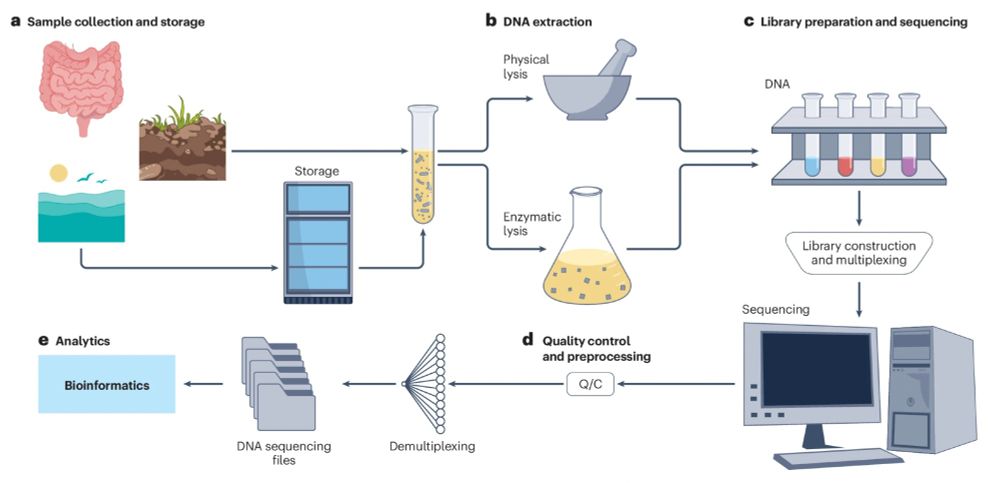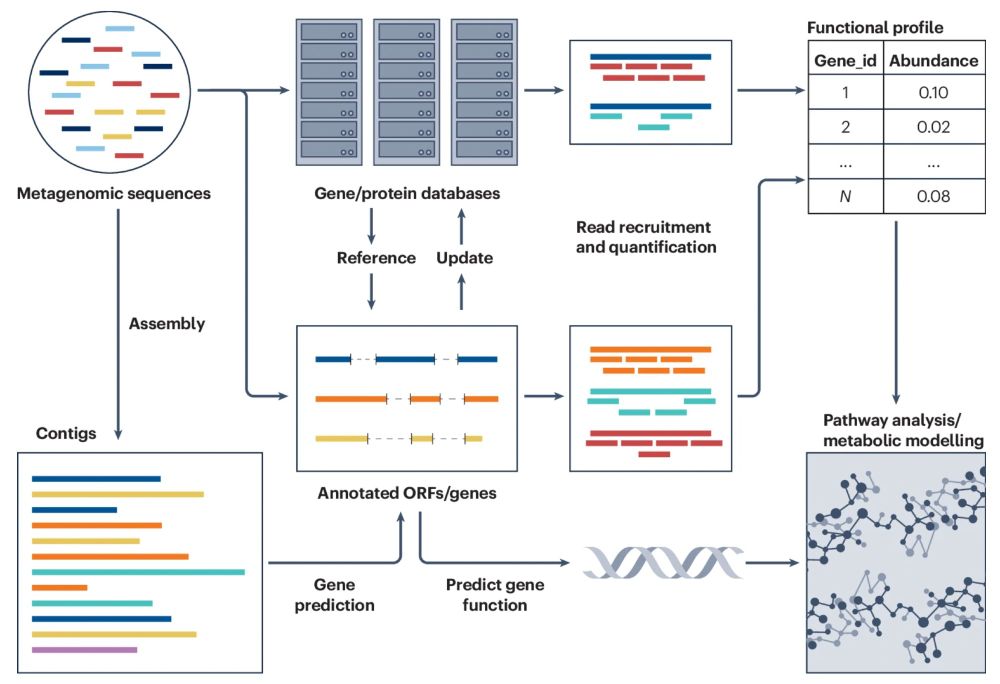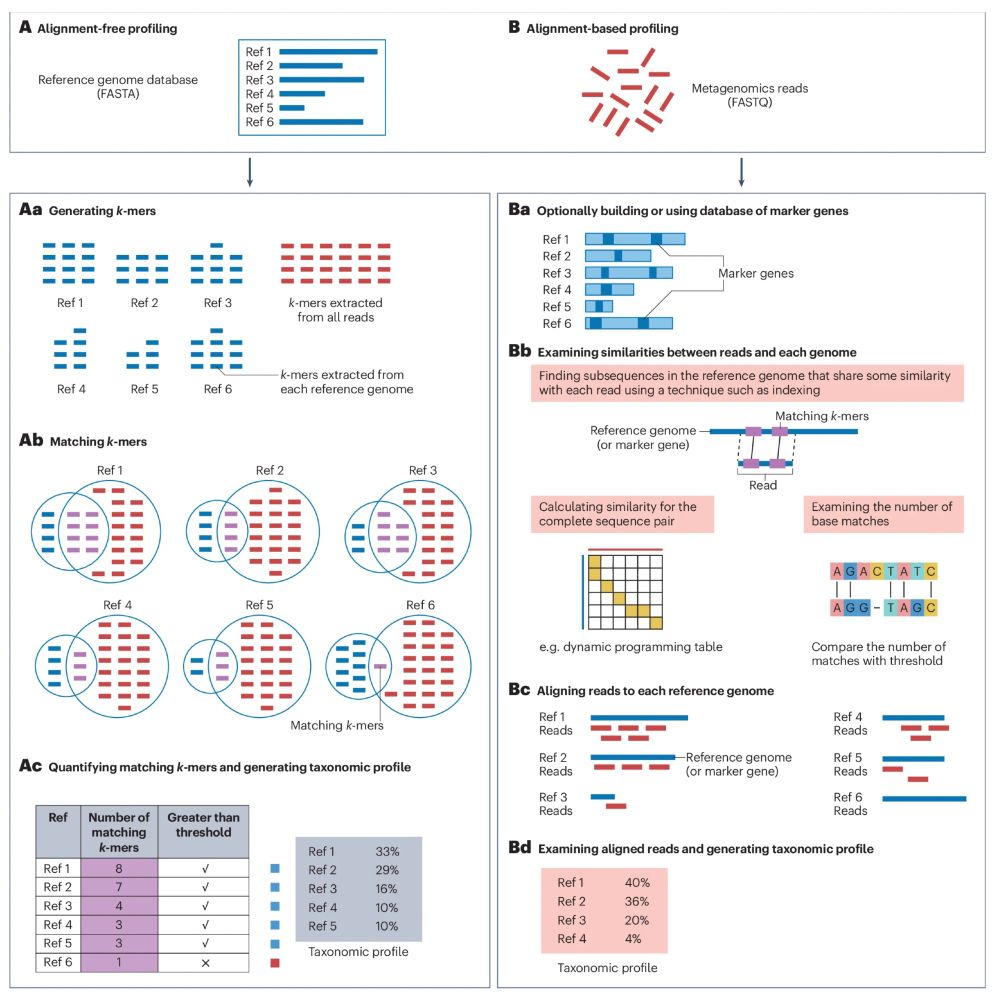
Chromosomal capture of beneficial genes drives plasmids towards ecological redundancy
Abstract. Plasmids are a ubiquitous feature of bacterial genomes, but the forces driving genes and phenotypes to become associated with plasmids are poorly
Chromosomal capture of beneficial genes drives plasmids towards ecological redundancy | The ISME Journal | Oxford Academic https://academic.oup.com/ismej/advance-article/doi/10.1093/ismejo/wraf091/8128477?rss=1&login=false
13.05.2025 03:32 — 👍 4 🔁 2 💬 0 📌 1
Bacterial nitrite production oxidizes Fe(II) bioremediating acidic abandoned coal mine drainage journals.asm.org/doi/full/10.... #jcampubs
18.04.2025 14:54 — 👍 0 🔁 1 💬 0 📌 0
Extracellular electron transfer proteins contribute to reduction of ferric minerals by Geobacter biofilms journals.asm.org/doi/full/10.... #jcampubs
10.04.2025 13:41 — 👍 3 🔁 3 💬 0 📌 0
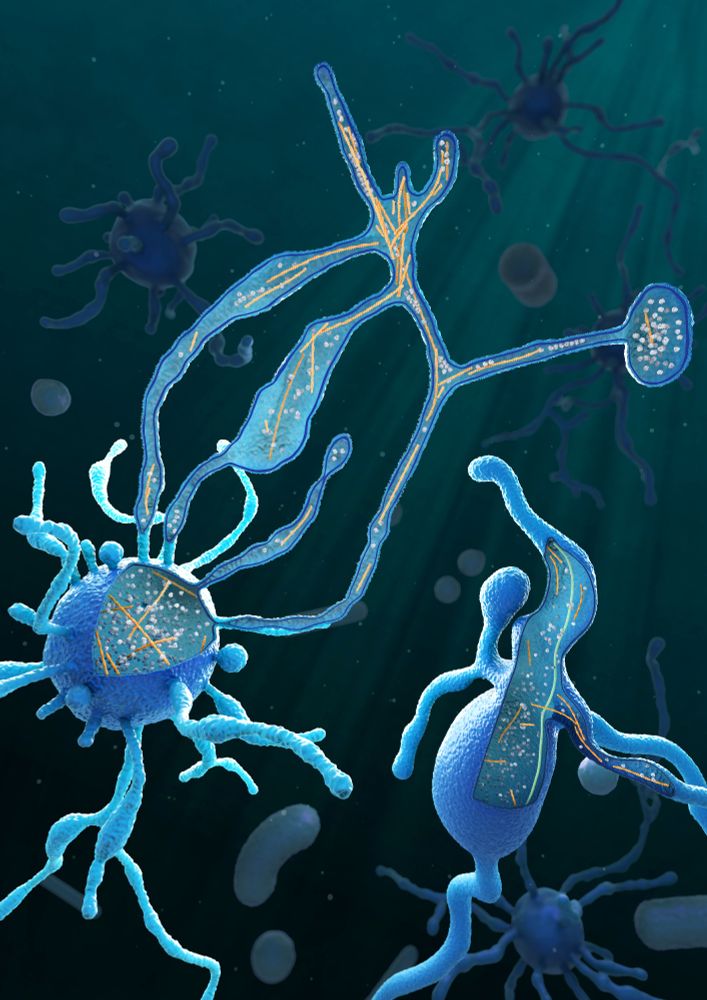
Credit: Margot Riggi (@margotriggi.bsky.social), Max-Planck Institute of Biochemistry (@mpibiochem.bsky.social)
Asgard archaea have actin - but what about microtubules? Where do they come from? 🧐 Our new paper www.cell.com/cell/fulltex... by @xujwet.bsky.social & @florianwollweber.bsky.social, in collaboration with the Schleper & Wieczorek labs, describes tiny Asgard microtubules! #TeamTomo #ArchaeaSky 1/6
21.03.2025 15:16 — 👍 254 🔁 109 💬 7 📌 15
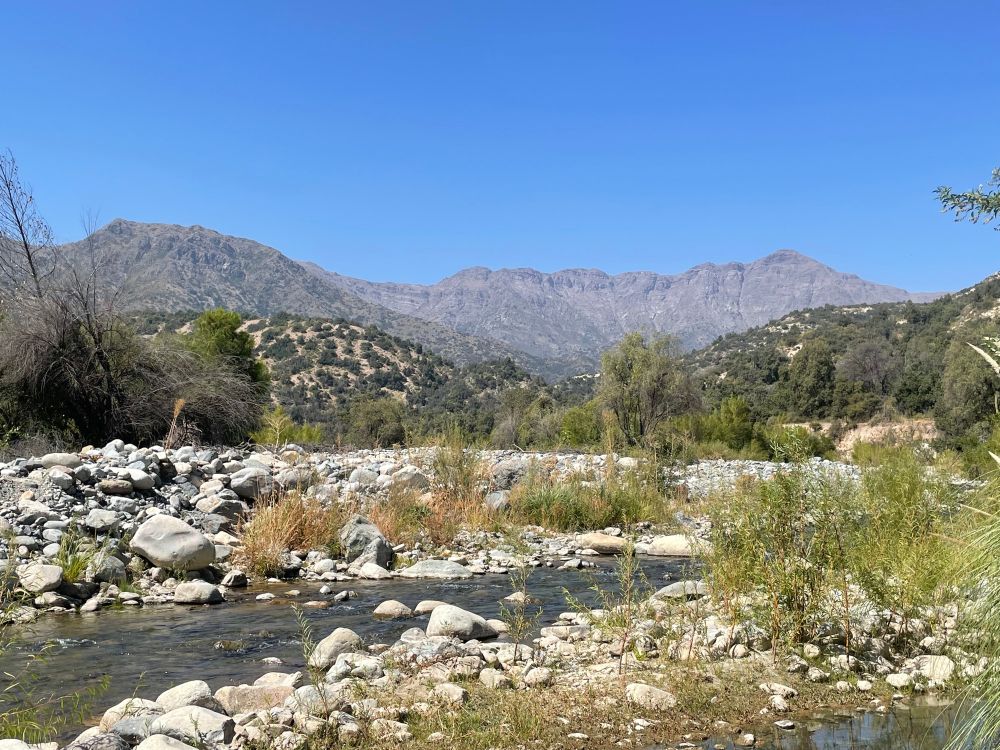

Visited Río Clarillo National Park in Chile with our collaborator Nacho Iganacio’a group. Hope our set up works! Thank you for a great team effort yesterday!
20.03.2025 12:16 — 👍 3 🔁 0 💬 0 📌 0
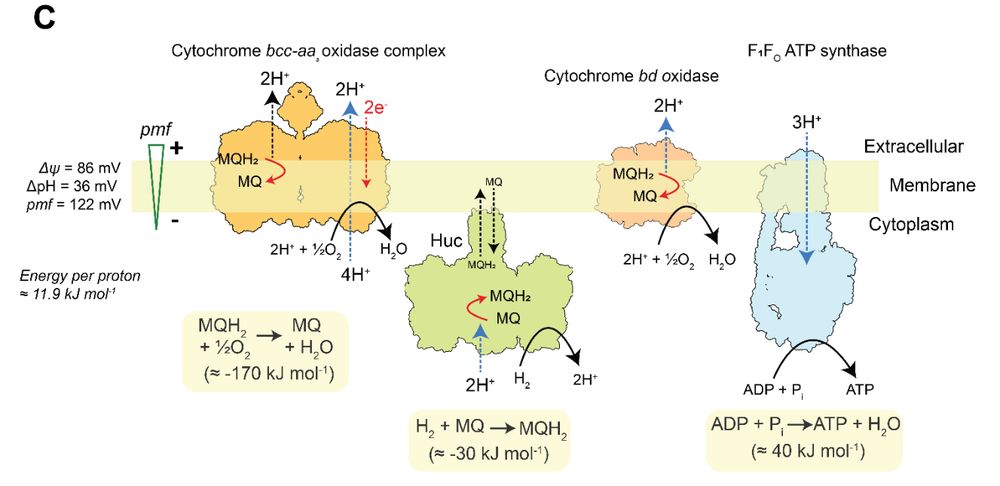
Cartoon display of the bioenergetic scenario for Huc using either bd-I oxidase or bcc-aa oxidase as pmf-generating unit, driving ATP synthesis by the F1F o-ATP synthase.
Hydrogenase-driven ATP synthesis from air
www.biorxiv.org/content/10.1...
New work from us where we put the Huc hydrogenase to work to see if it can generate a proton motive force. It can!
cc: @ashleighkropp.bsky.social @rhyswg.bsky.social @greening.bsky.social
19.03.2025 03:21 — 👍 27 🔁 12 💬 1 📌 1

Unusual ‘soda lakes’ may have kick-started life on Earth by concentrating key compounds
Phosphorus leached from volcanic rocks in warm waters could have triggered reactions needed to launch biochemistry
Nice perspective in Science summing up recent advances on the importance of phosphate to the origin of life and featuring my lab's favorite field sites: Lakes Goodenough and Last Chance... (photo is Mono Lake though) www.science.org/content/arti...
28.02.2025 17:15 — 👍 27 🔁 14 💬 0 📌 0
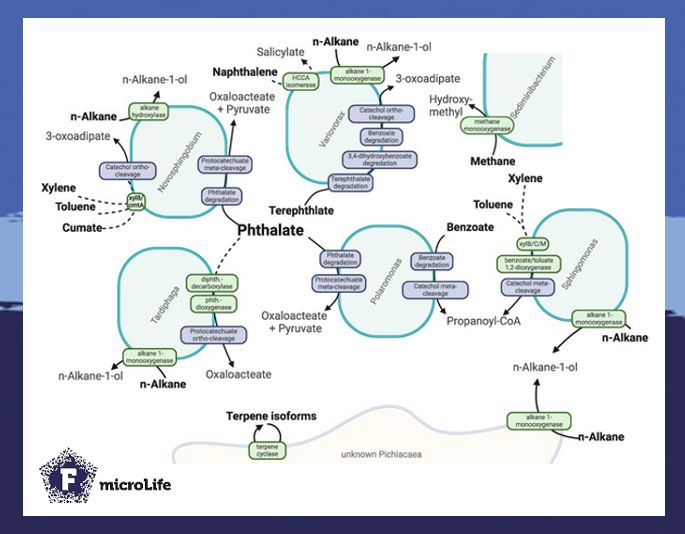
🦠 #OilReservoirs harbor unseen microbial worlds! 🌍🔬 @alexjprobst.bsky.social lab study of a pristine reservoir reveals bacteria & fungi breaking down #hydrocarbons—and a global network of shared genes. But the mystery of plasmid distribution pattern remains! 🧬 #Biodegradation
https://buff.ly/4gwdYUJ
19.02.2025 08:00 — 👍 8 🔁 4 💬 0 📌 0
Less than 2-weeks until the deadline for #Goldschmidt2025 session and workshop proposals. Help build the #geochemistry science program, more info⬇️
03.10.2024 09:29 — 👍 2 🔁 2 💬 0 📌 0
Distribution of early-branching Cyanobacteriia and the potential habitats that gave rise to the earliest oxygenic phototrophs journals.asm.org/doi/full/10.... #jcampubs
31.01.2025 04:49 — 👍 11 🔁 3 💬 1 📌 0
Single-cell phenotyping of extracellular electron transfer via microdroplet encapsulation journals.asm.org/doi/full/10.... #jcampubs
15.01.2025 14:44 — 👍 4 🔁 2 💬 0 📌 0
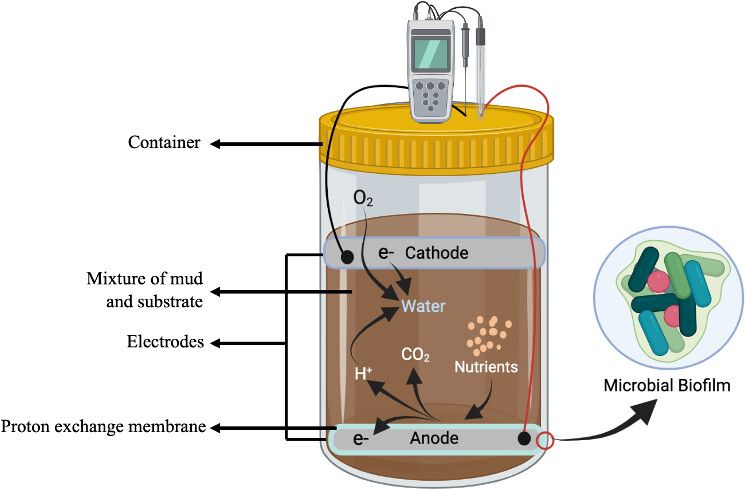
Since I hope to find things to "spark microbial joy," what could be better than scaling up a microbial fuel cell? Maybe from these high sulfide mud seeps in Puget Sound. Right, @pgirguis.bsky.social ??
15.01.2025 19:49 — 👍 6 🔁 2 💬 1 📌 0
Introducing mGems, mBio’s new review type | mBio journals.asm.org/doi/full/10....
15.01.2025 14:43 — 👍 6 🔁 1 💬 0 📌 0

Exciting new msystems webinar
15.01.2025 20:41 — 👍 5 🔁 1 💬 0 📌 1
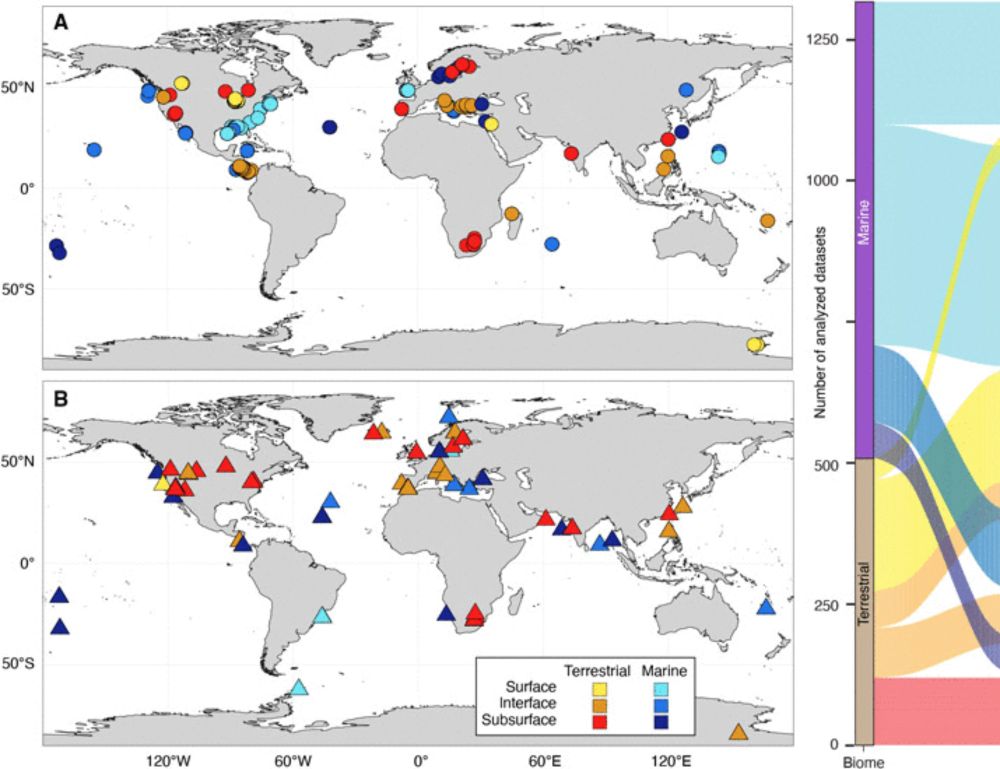
A global comparison of surface and subsurface microbiomes reveals large-scale biodiversity gradients, and a marine-terrestrial divide
The microbiomes of Earth’s surface and subsurface environments are different in composition, but similar in diversity.
Deep life is astonishing and diverse, and we have so much more to learn!
So happy that this study is out. Big thanks to co-first author @bellahda.bsky.social and all the collaborators!
www.science.org/doi/10.1126/...
@science.org @mblscience.bsky.social @simonsfoundation.org #deeplife #microbiome
18.12.2024 23:12 — 👍 84 🔁 38 💬 4 📌 7
No one had ever imagined the existence of cable bacteria: life based on internal electric wires. We aim to unravel how this unique form of life functions.
Check out the Electromicrobiology Conference 2025 https://conferences.au.dk/electromicrobiology-2025
Senior scientist @Geological Survey of Finland
#geomicrobiology #microbialecology #C_cycling #biogeochemistry #climatechange #groundwater #astrobiology #WomenInSTEM #heavymetal #birbwatching
Earth scientist/mineralogist/geochemist. Studying interactions between the geosphere and the biosphere. How bacteria form rocks? Looking for traces of (old, extraterrestrial..) life in rocks. How bacteria impact the behavior of chemicals in the environment
European Association of Geochemistry: non-profit organization promoting geochemistry internationally https://www.eag.org/
What we do: Goldschmidt Conference, open access journals, funding and outreach programs, recognition of scientific excellence
Goldschmidt2026 will be held in Montreal, Canada on 12-17 July 2026. https://tinyurl.com/bd5ec49j
The Goldschmidt Conference is organized by the European Association of Geochemistry and the Geochemical Society.
In-depth, independent reporting to better understand the world, now on Bluesky. News tips? Share them here: http://nyti.ms/2FVHq9v
Molecular Microbial Ecologist | Assoc Prof Middlebury College on Abenaki lands | Lover of microbes | Social justice advocate. Views are my own. https://sites.middlebury.edu/eggleston/
#MSCA Fellow #uArctic_project | 📍🇩🇰 KU
🇨🇴 Guajira | UniAndes MSc Environmental microbiology BSc MBIO BSc BIO | 🇬🇧 UEA PhD Microbial ecology 🌱🦠 DNA-SIP
Former #IB school #MYP coordinator 👩🏽🏫
Crafty 🧶 | Mamá & wife | Views my own
www.nasmillelarkemejia.com
#Hydrogeologist, husband, #groundwater, #watershed recovery, solving problems of wells & wellfields, water for the people, other stuff. Youngstown, Ohio USA area Mahoning HUC 05030103 home but toe in Tanzania groundwaterscience.com groundwatertanzania.com
Not-for-profit journals from @femsmicro.org | Publish with purpose | https://academic.oup.com/fems-journals | #FEMSJournals | #OpenAccess | #PeerReview | #Microbiology
Environmental microbiologist, specialising in soil microbial ecology of Antarctic deserts. Associate Dean Research, Faculty of Science, University of New South Wales, Australia.
Environmental microbiologist and CRC at UWaterloo. Tangent-prone story teller and compulsive frisbee chaser. Views are my own.
Epigenetic Inheritance, Neuroscience & anything biology-related
https://www.odedrechavilab.com/
https://www.qedscience.com
TED: https://shorturl.at/myFTY
Huberman Lab Podcast: https://youtu.be/CDUetQMKM6g
Associate Professor at the University of Oregon. Microbes, evolution, and infectious disease.
Dad and husband.
barberlab.org
Researcher studying adaptation of organisms to the Arctic light while trying to adapt to the Arctic light herself. ⏰🐦⬛🐌
Yet another microbial bioinformatician, group leader, dad
github.com/wwood https://research.qut.edu.au/cmr/team/ben-woodcroft/
Queer scientist mom r nerd gardner she/her
Microbe host, researcher, microbiome drug developer at Vedanta Biosciences
Microbial ecologist interested in microbes in the Arctic soils. Senior Scientist at Natural Resources Institute Finland (LUKE)
Microbial ecologist: EIC for mSystems Journal, cofounder of http://biomesense.com; President for AMI (http://appliedmicrobiology.org); Father, Scientist, Pilot.


















